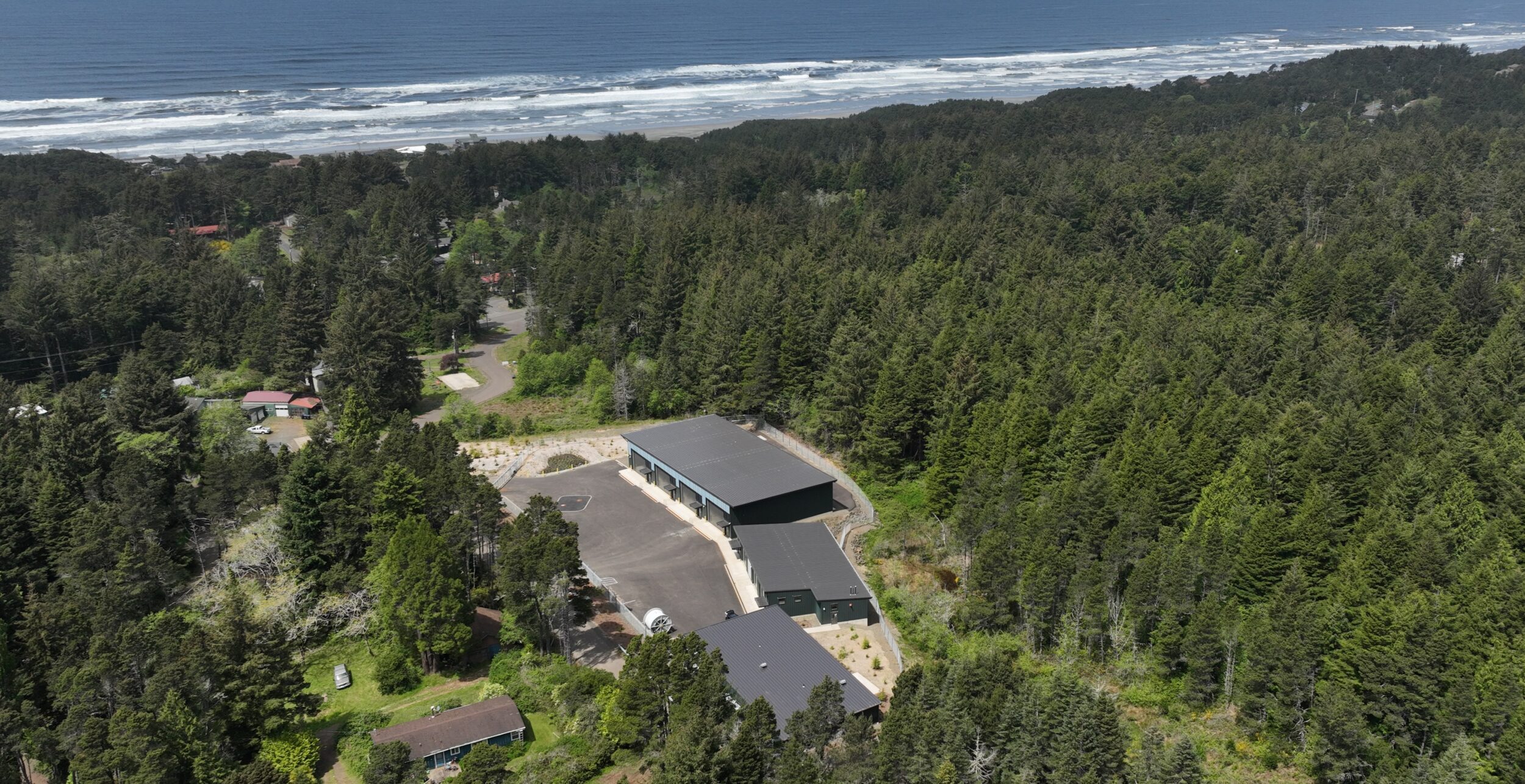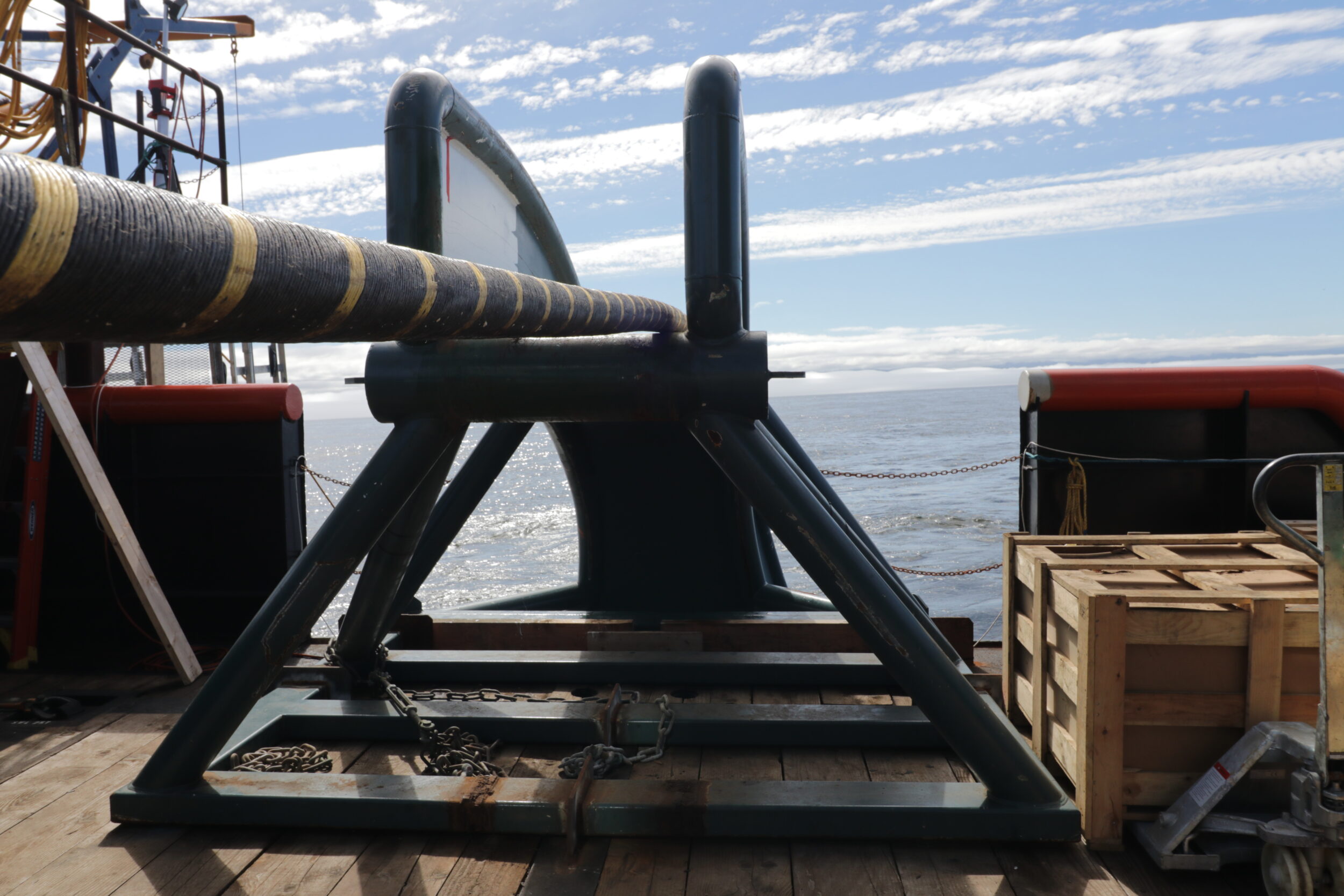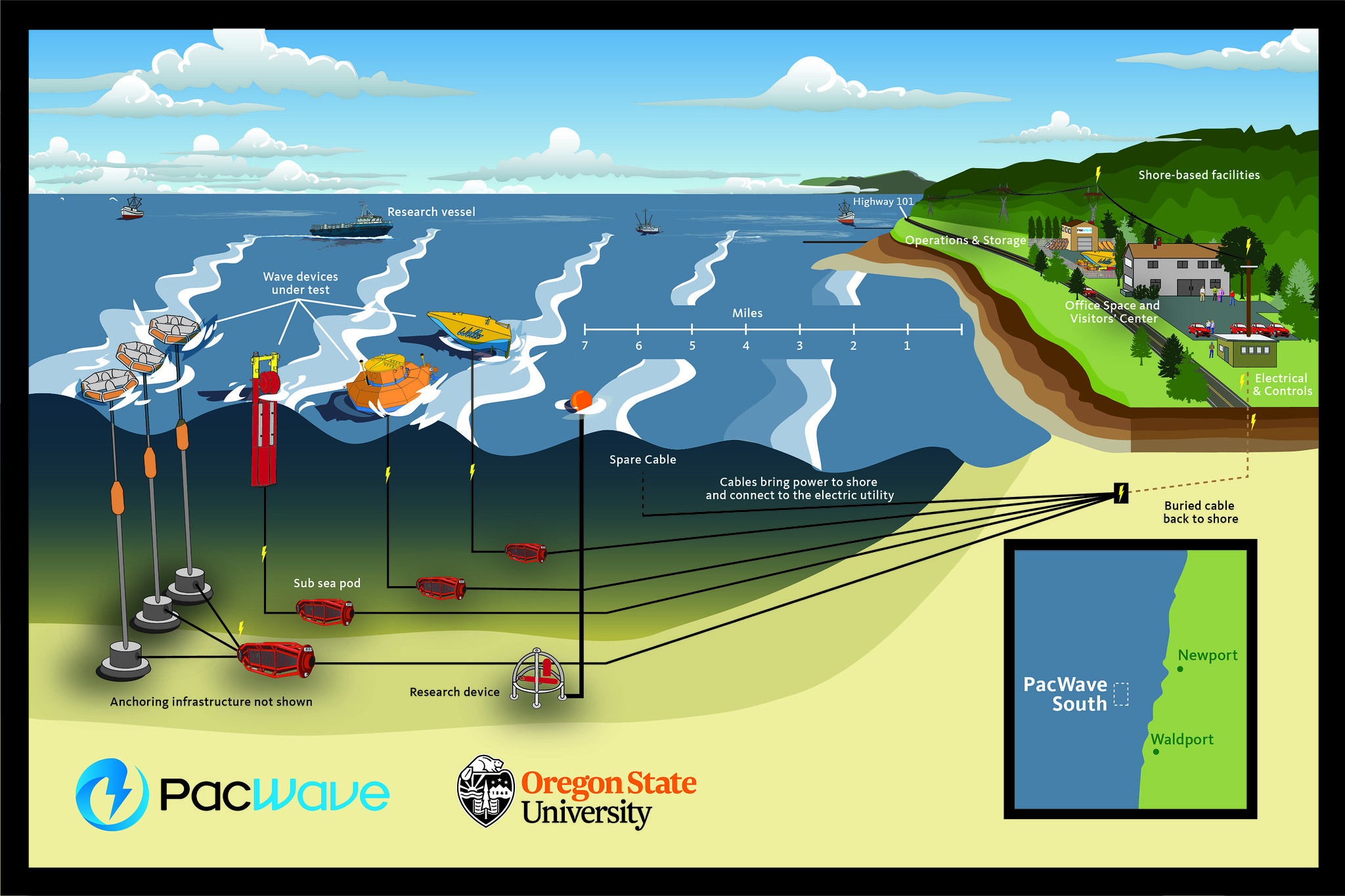
By DANA TIMS/Lincoln Chronicle
Dan Hellin is no stranger to delays when it comes to building the nation’s first wave-energy testing facility just off the central Oregon coast.
Last summer, for instance, a major hurricane inflicted extensive damage and disruption to shipping traffic in parts of Mexico and the Caribbean, temporarily delaying the delivery of steel cables critical to the PacWave South testing facility just north of Waldport.
Eventually, the cables made their way through the Panama Canal to Oregon, where both the subsea and terrestrial elements of the $80 million project have now been completed.

“Held up just a bit,” Hellin told Lincoln Chronicle at the time. “But otherwise, everything is running according to schedule.”
Now new delays are on the horizon, primarily in the form of pending federal budget cuts that PacWave, along with a raft of other U.S.-based renewable-energy projects are relying on for both completion of and for long-term operations.
“There is definitely continuing uncertainty throughout the process right now,” Hellin, PacWave’s deputy director, said this week. “But we are still working on the assumption that 2026 will be the year for deployment of testing devices in the water.”
PacWave is awaiting the outcome of the U.S. Department of Energy’s “Go-No/Go” review, he said. A green light, which would help trigger the release of the next round of critical funding, is expected at any time.
Even a “go” decision, however, wouldn’t end all uncertainties about the money PacWave needs to oversee administration of a project that’s already been more than a decade in the making. That’s because the federal Department of Energy’s budget request for 2025 already represents a 20 percent cut compared to the budget Congress provided last year.
Still, Hellin is remaining optimistic as the process moves ahead.
“There is always change from one administration to the next and, for this transition, there was more of a freeze on communication,” he said. “That’s eased up some now and communications are definitely happening.”

From three to two
The potential impacts from reduced federal funding, along with further uncertainties caused by the specter of government-imposed tariffs, have already taken a toll on the commercial clients planning to use PacWave to test their energy-producing devices.
In April, for instance, a West Linn-based company that had been on track to start testing its new device in September, announced that once-approved money had suddenly sunk out of sight. The result was that AquaHarmonics soon had to begin laying off the employees needed to continue the work.
That means that only two of the seven companies that were recipients of a Department of Energy award of $25 million million back in 2022 to begin testing wave energy converters at PacWave still remain on track to actually begin open-water testing.
One of those is C-Power, an Oregon State University spin-off company, which has one of its three offices in Corvallis. The company tested one of its non-grid-connected devices last year at the U.S. Navy Wave Energy Test Site in Hawaii and is still aiming to move to the larger, more sophisticated PacWave site sometime next spring or summer, Hellin said.
Kristi Terrasa, the company’s senior associate for corporate and business development, told the Lincoln Chronicle that a fuller interview was not possible as of deadline, but she added, “We’re making good progress on a couple of ongoing projects.”
The second company still apparently ready to go is CalWave, a California-based wave energy technology developer that was founded out of UC Berkeley in 2014.
Unlike C-Power’s device, CalWave’s converter would be connected to the data cables that range in length from 10 to 13 miles and link PacWave’s four in-ocean testing berths to an underground vault at Driftwood Beach State Park north of Waldport.
CalWave, on the strength of becoming California’s first in-sea, long-duration demonstration project, was awarded $7.5 million from the federal Department of Energy to deploy its device at PacWave, which is the nation’s first accredited, grid-connected, open-water wave energy test facility.

Making waves
Hellin and others remain hopeful that testing at PacWave will remain on track. The long-term benefits of the project are clear, they believe.
While the system may never be up and running to the full capacity of its 20-megawatt federal license, it’s entirely possible that significant use of the facility will help add power to Central Lincoln Peoples Utility District’s grid, since the two are connected.
Working on the assumption that between 300 and 400 Lincoln County houses could be powered per megawatt, upwards of 6,000 to 8,000 households could keep their lights and heat on solely due to power generated by PacWave.
“That means that everyone (at PacWave) is generating full power at the same time,” Hellin said, “which is in reality, never the case. But we are still talking about a lot of power. And that’s just from PacWave.”
As for the uncertainty surrounding the project’s critical financing, Hellin added, “It’s not unique that we are living with that. A lot of people are. But our plan is to keep moving forward and we’ll plan accordingly.”
- Dana Tims is an Oregon freelance writer who contributes regularly to Lincoln Chronicle and can be reached at DanaTims24@gmail.com





















PAC WAVE and Oregon State University are not the only engineering contractors who would thrive on the opportunity to develop electricity for Oregon homes. Solar panels have shown to be less expensive and low on maintenance costs. Other options besides disturbing the coastal environment are possible if our Oregon public leaders make sensible and logic financial decisions.